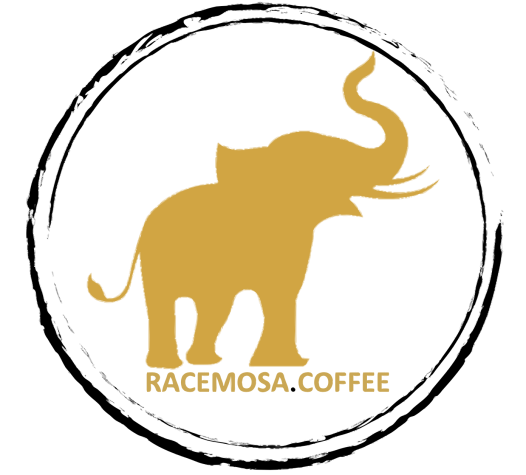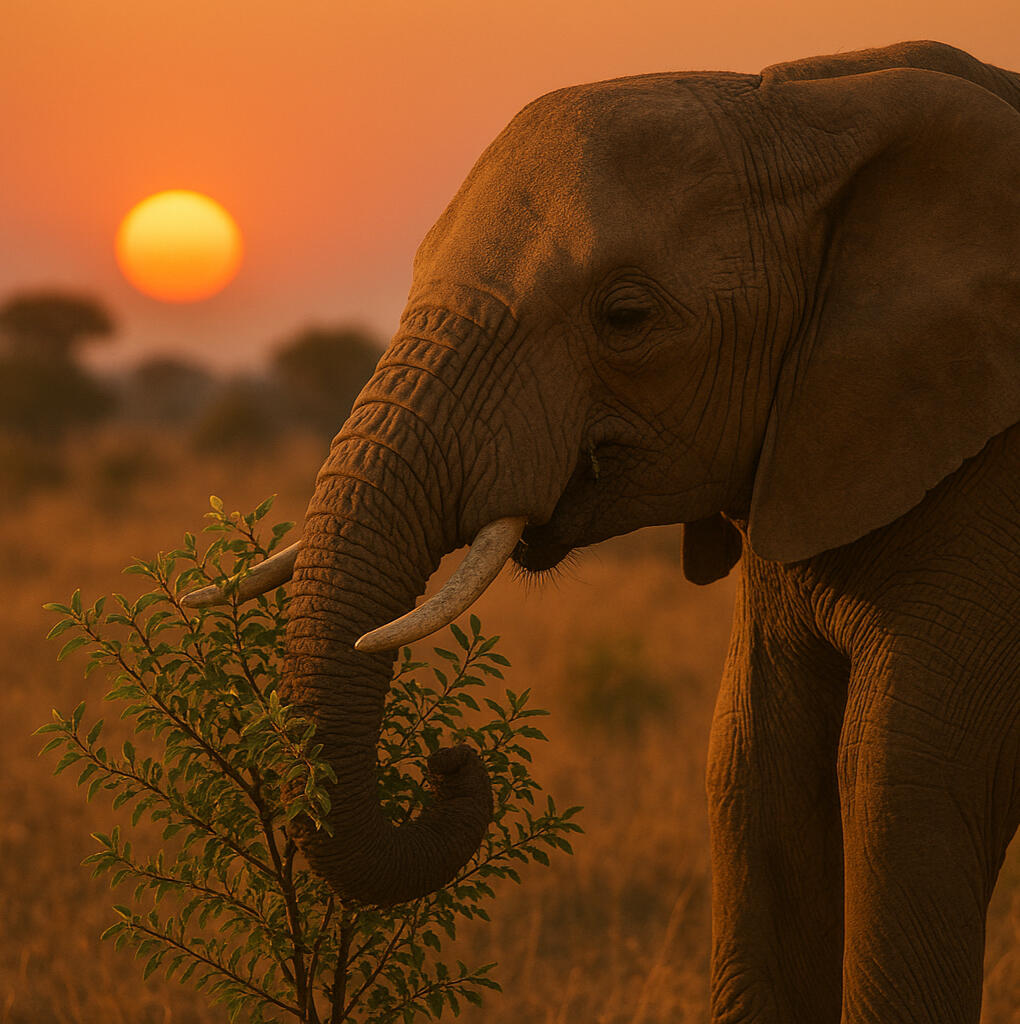
Coffea Racemosa
THE WORLDS RAREST COFFEE
Racemosa Facts
- One of the 133 known coffea species worldwide (not a varietal or cultivar)- Indigenous to South Africa, Mozambique, and Zimbabwe- Naturally low caffeine levels of only 0.7% (arabica 1.2%+)- Grows at an elevation of 0m-600m above sea level- Annual rainfall of 650mm (with significant dry periods of six months)- 11,000 trees in production worldwide and only a few wild specimens known- IUCN Red list of threatened species
COFFEA RACEMOSA
Four Farms - Mozambique & South Africa
We own two farms in South Africa - on the Elephant Coast (Hluhluwe) and the Dolphin Coast (Ballito) and source from a further two farms in Mozambique and South Africa.
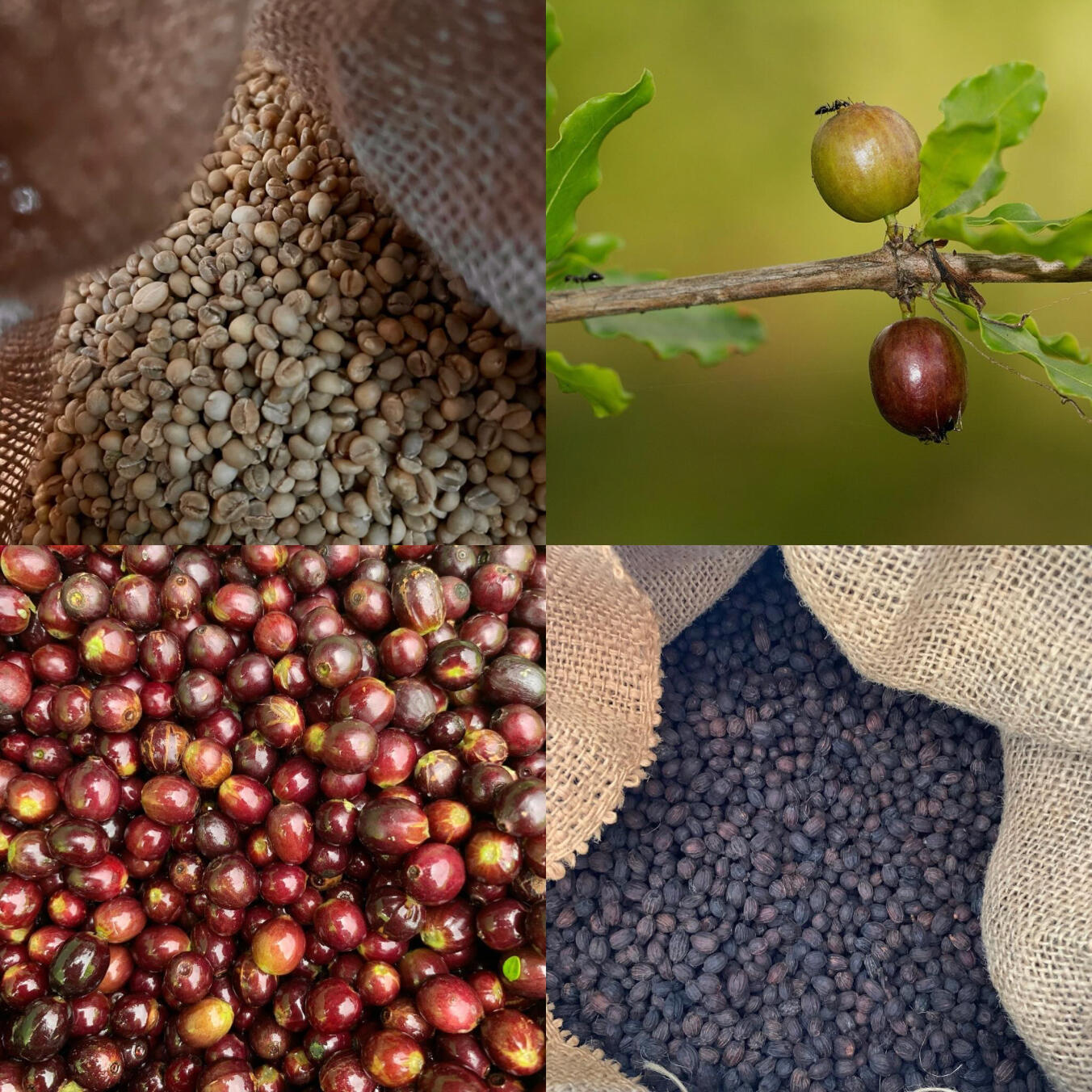
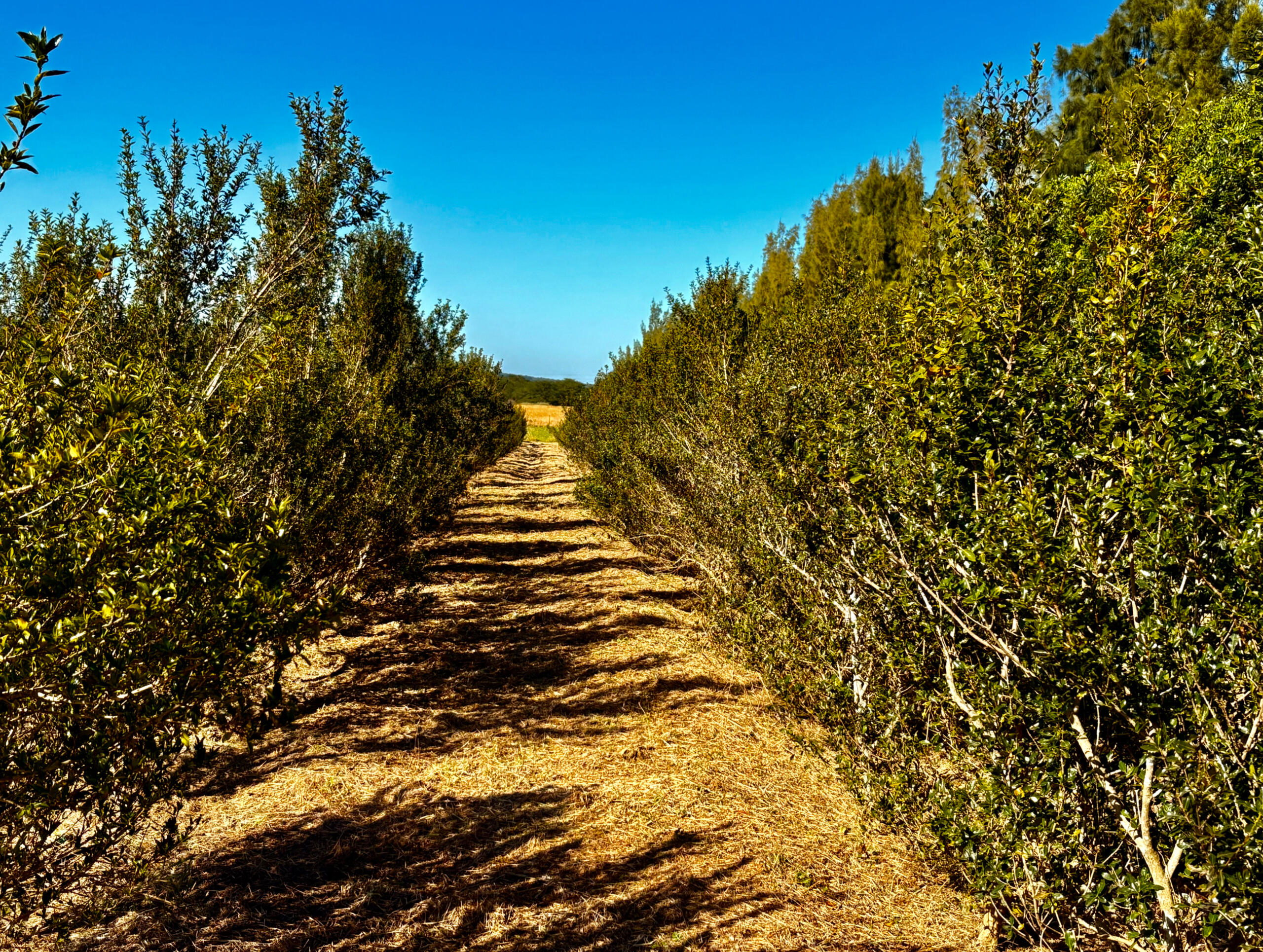
COFFEA RACEMOSA
Tiny Production
With around 9,000 seedlings between the two farms, and 2,000 trees producing only between 35g-100g of green coffee per year per tree!
COFFEA RACEMOSA
Genetic Variation
As Racemosa has never been domesticated - there is huge variation in the plants. From the leaf size, how deciduous they are, to the flower shape and colour
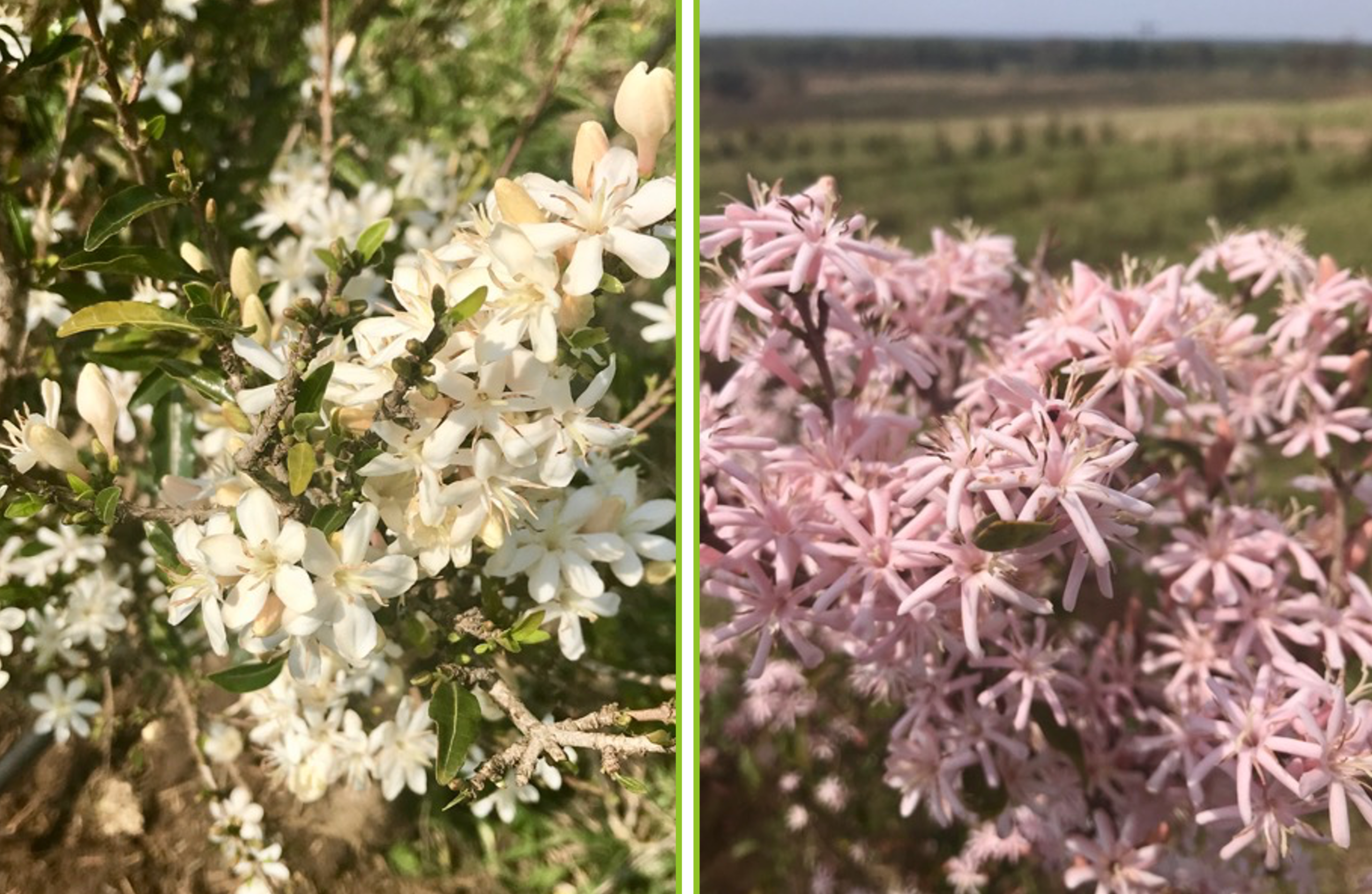
Elephant Coast & Dolphin Coast
Our two farms in the sub-tropics of Kwa-Zulu Natal
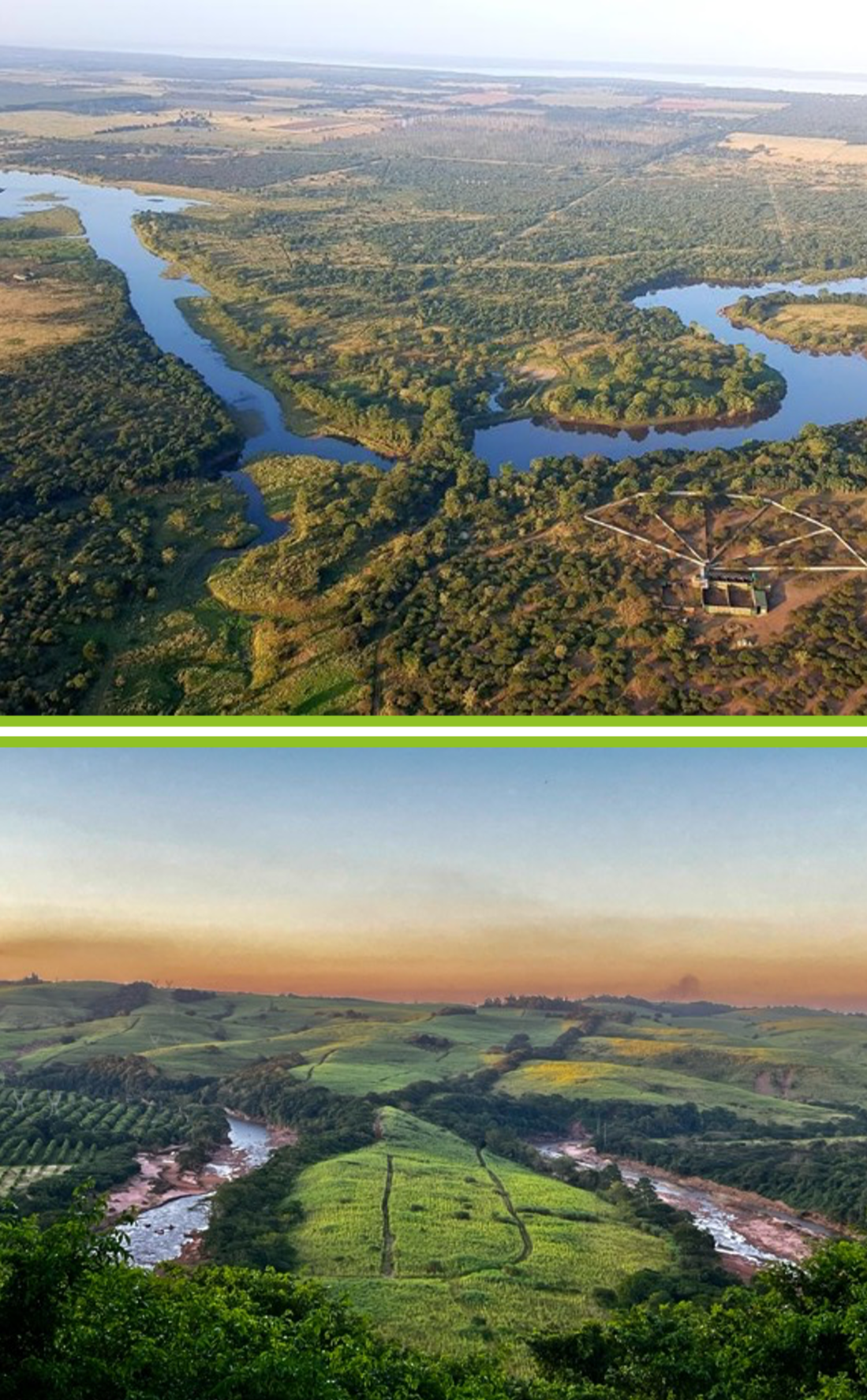
SEASONS
Budding
The plants begin to show buds in early August
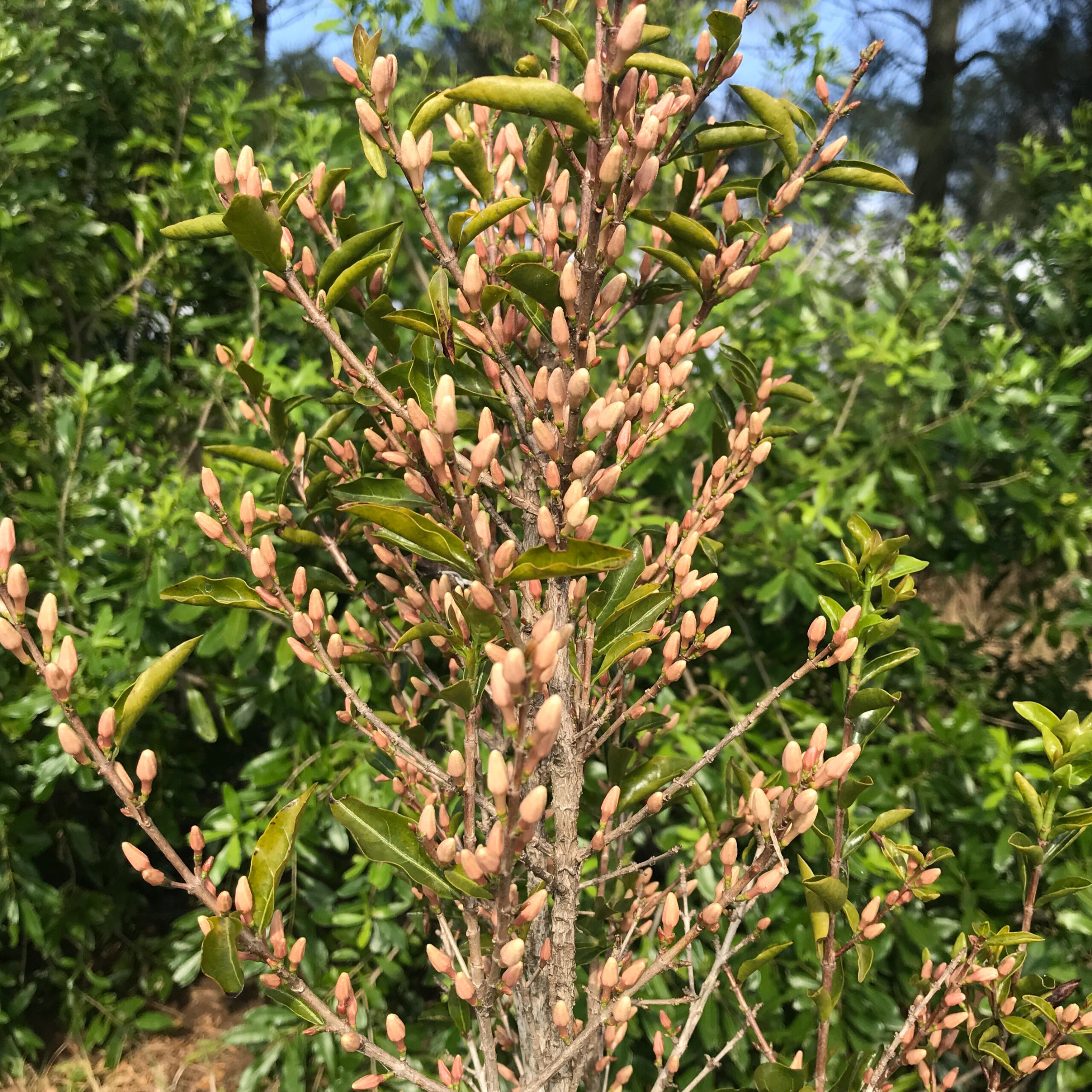
SEASONS
Flowering
Flowers are set by middle of September
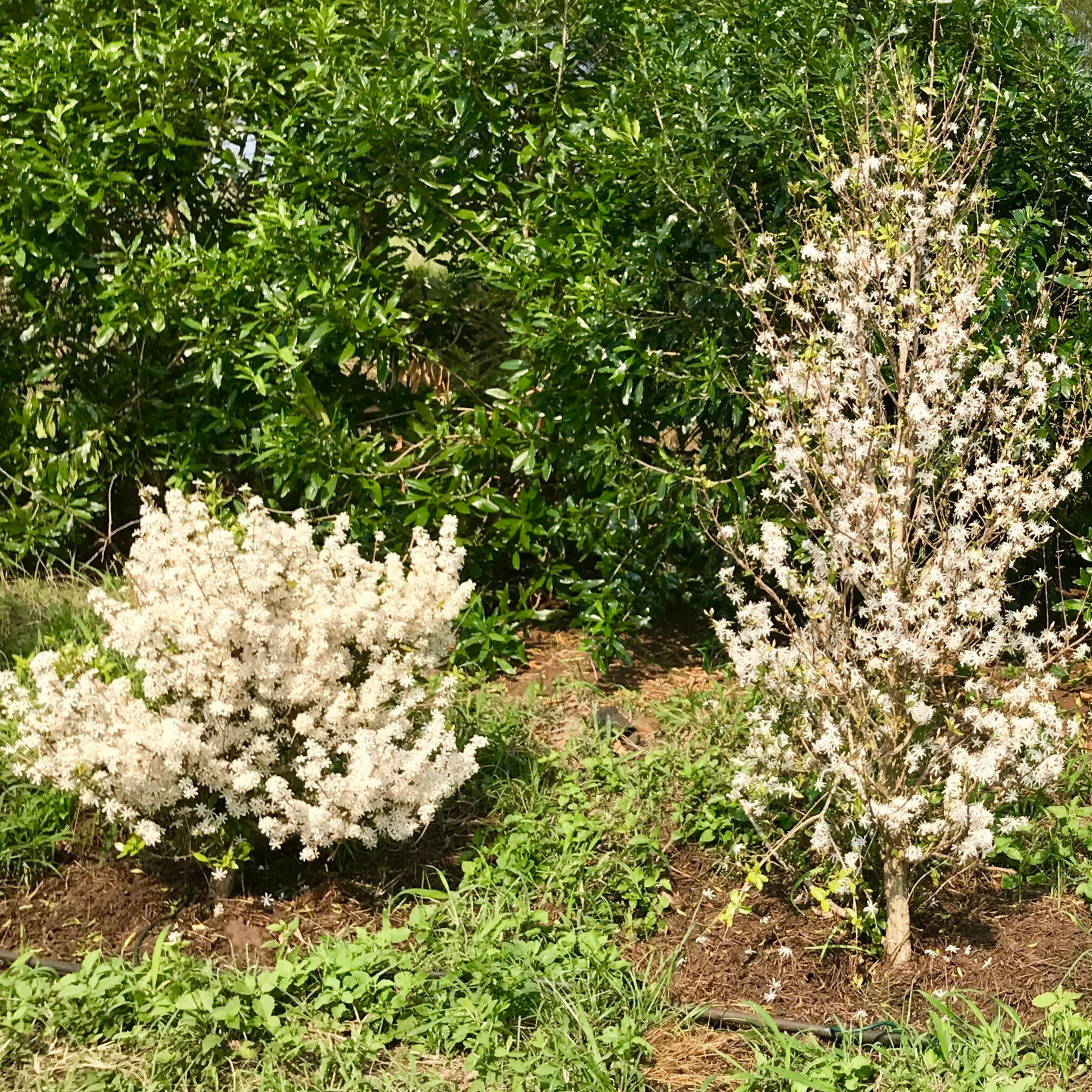
SEASONS
Berries
Berries are showing by middle of October
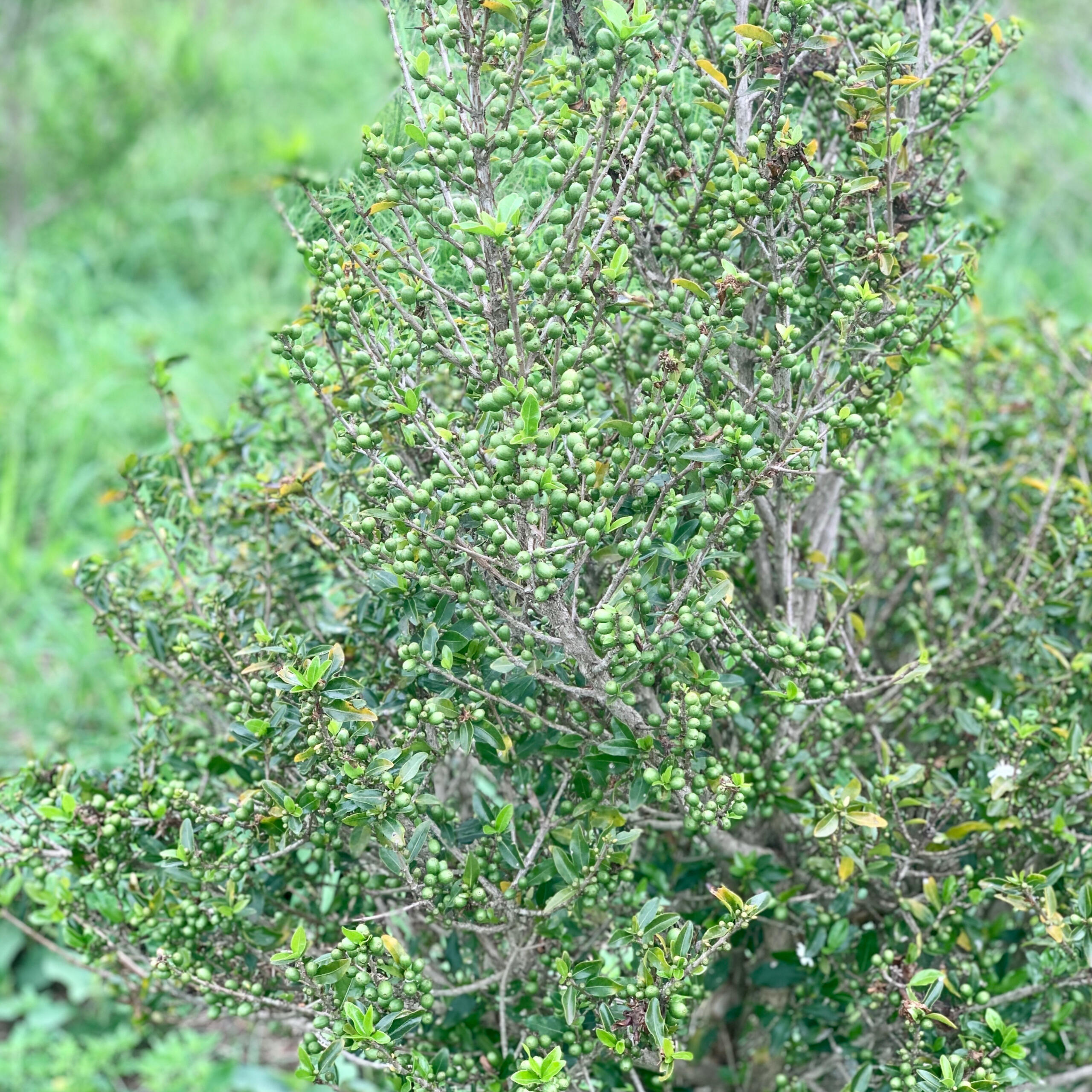
SEASONS
Harvesting
And ripe for picking by early November through December
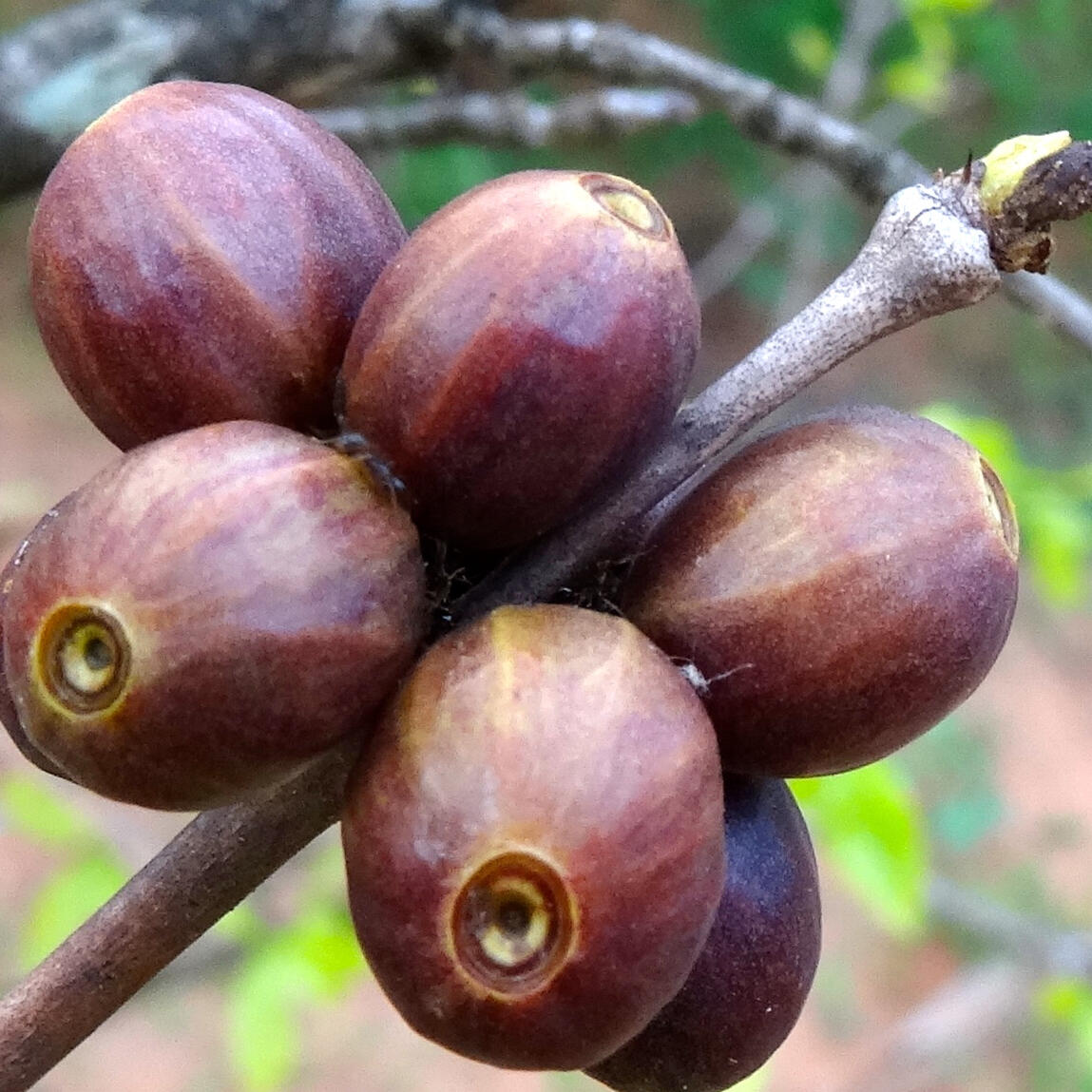
Resilience
Racemosa is endemic to the coastal forest belt between northern Kwa-Zulu Natal, Zimbabwe, and Mozambique, found growing wild in the coastal forests north of Lake St Lucia. Suited for the local climate, this coffee species is hardy, drought resistant, and resilient (it can withstand up to nine months in drought, and grows in sandy soils).Coffea racemosa is only found worldwide in a small and specific region, making it extremely vulnerable and protected species. It is often found in association with Brachystegia microphylla
COFFEA RACEMOSA
Post-Harvest Processing
With such a small crop we experiment where we can. The majority of the coffee is fully washed (traditionally), natural (sun dried), or honey process - with some carbonic maceration and anaerobic fermentation
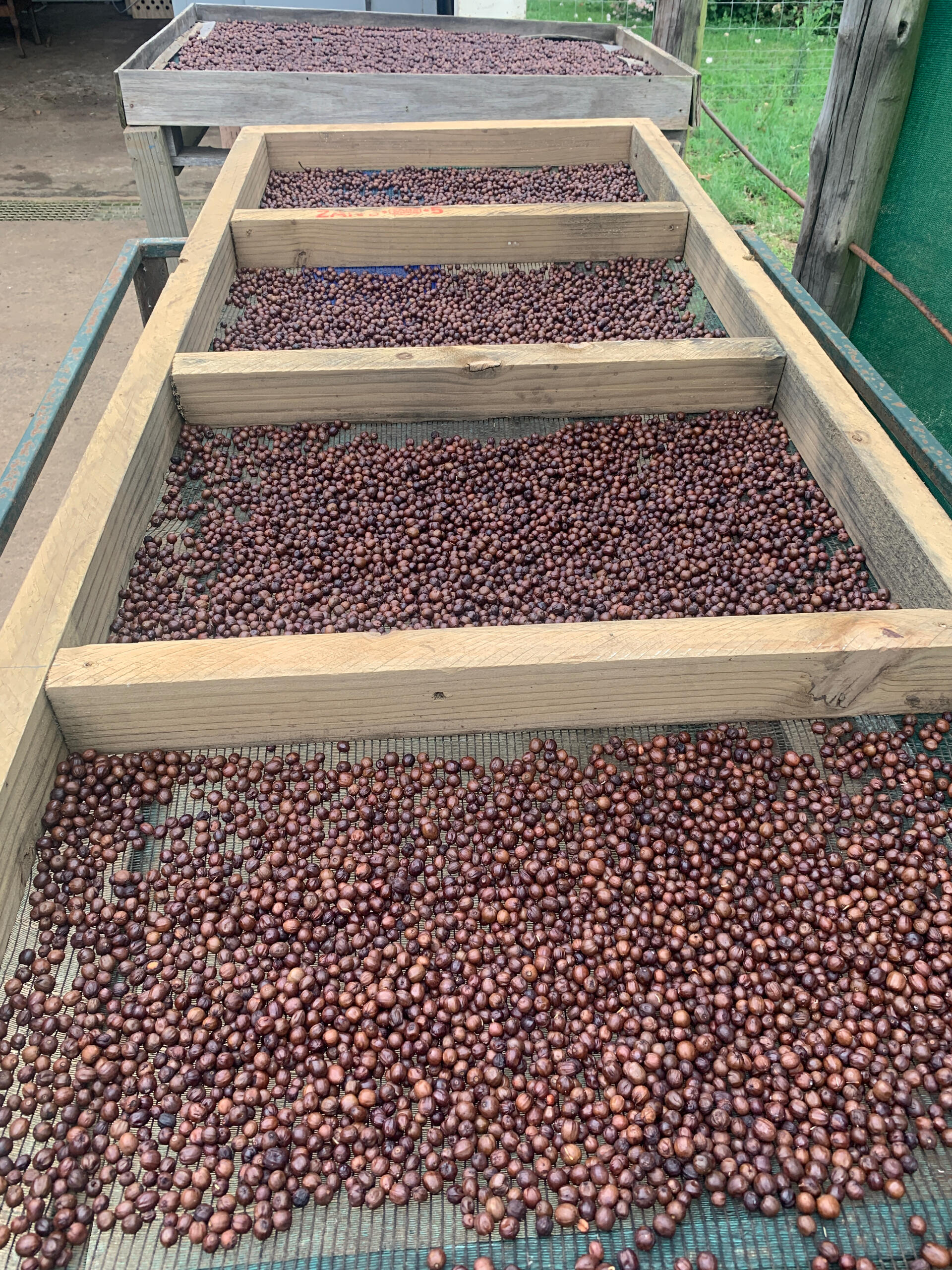
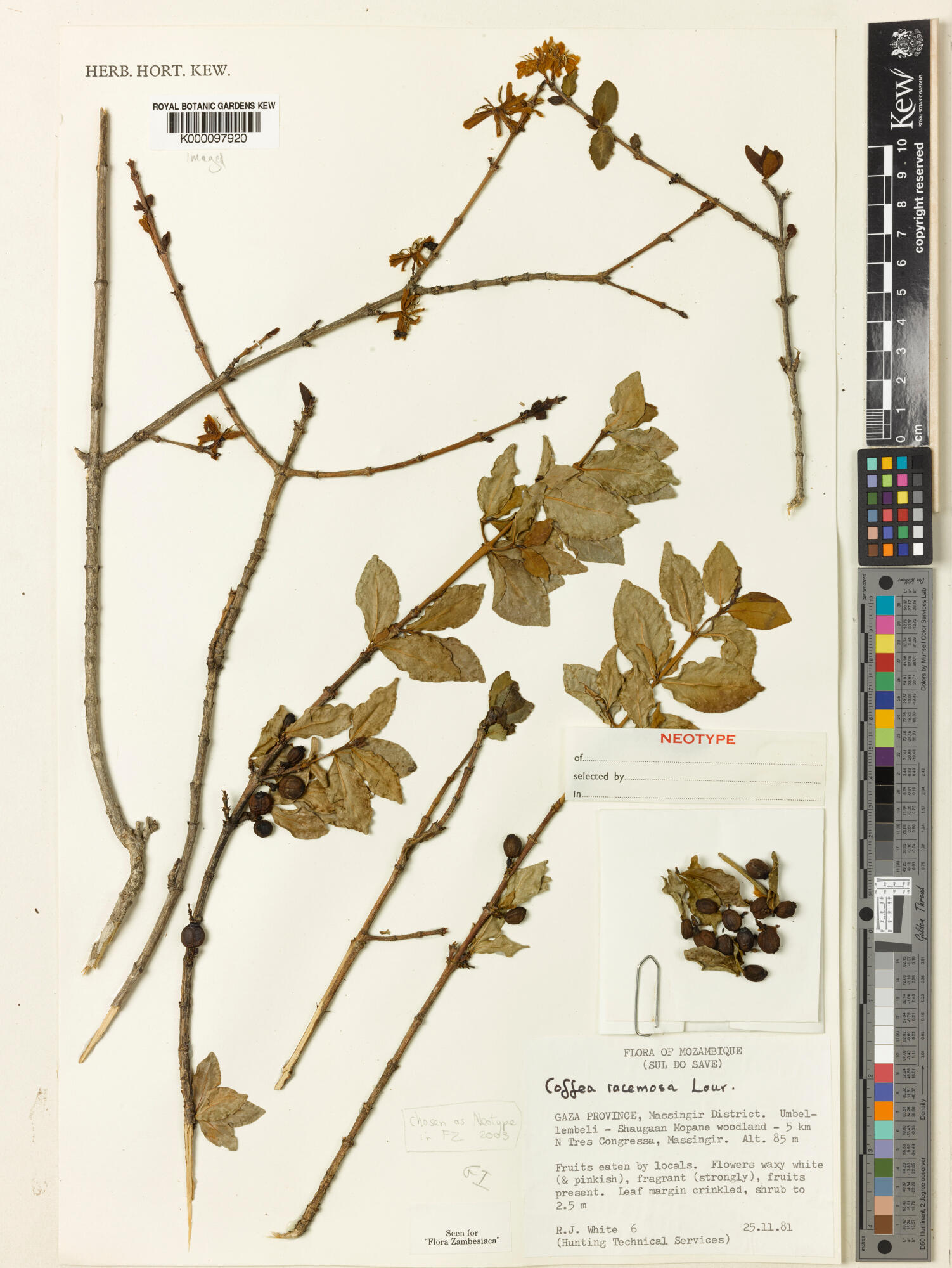
COFFEA RACEMOSA
History
After first being identified in 1788, Racemosa was taken up by the colonial Portuguese in Mozambique who farmed what we now know was both Racemosa and Zanguebariae commercially on a relatively large scale. In 1906, Racemosa received its first gold medal for taste in Lisbon. Even though we refer to it as a “wild” coffee species, it was farmed from 1800 up until the 1970’s with most of the crop exported to Portugal. However, much of what was exported was actually Coffea zanguebariae - an extremely similar species.
11,000 Trees
Only 11,000 known trees planted for production (mostly not yet mature), and very few specimens in the wild.
Less than 500kg
<500kg total annual production, with between 35g-100g per tree clean green coffee. The species seems to be biennial
0.7% Caffeine
Significantly less caffeine than C.arabica and especially C.canephora
Bean Size and Roasting
This image shows C.arabica in parchment on the left, and C.racemosa in parchment on the left. The tiny bean size is tricky to harvest, process, and roast. In order to hear 1st crack during roast, a stethoscope is recommended
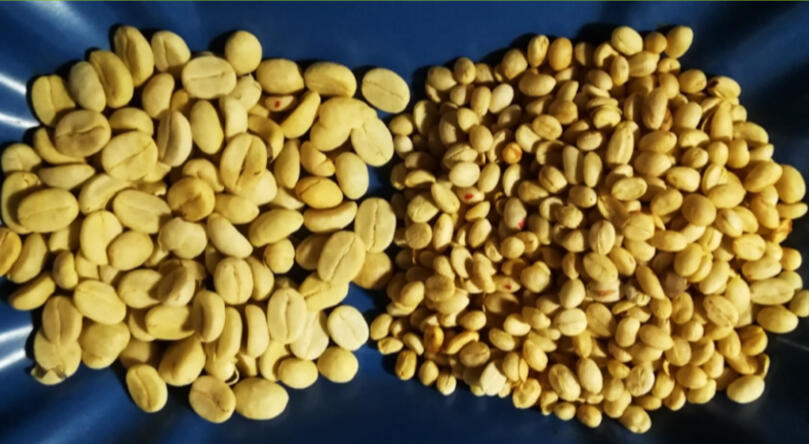
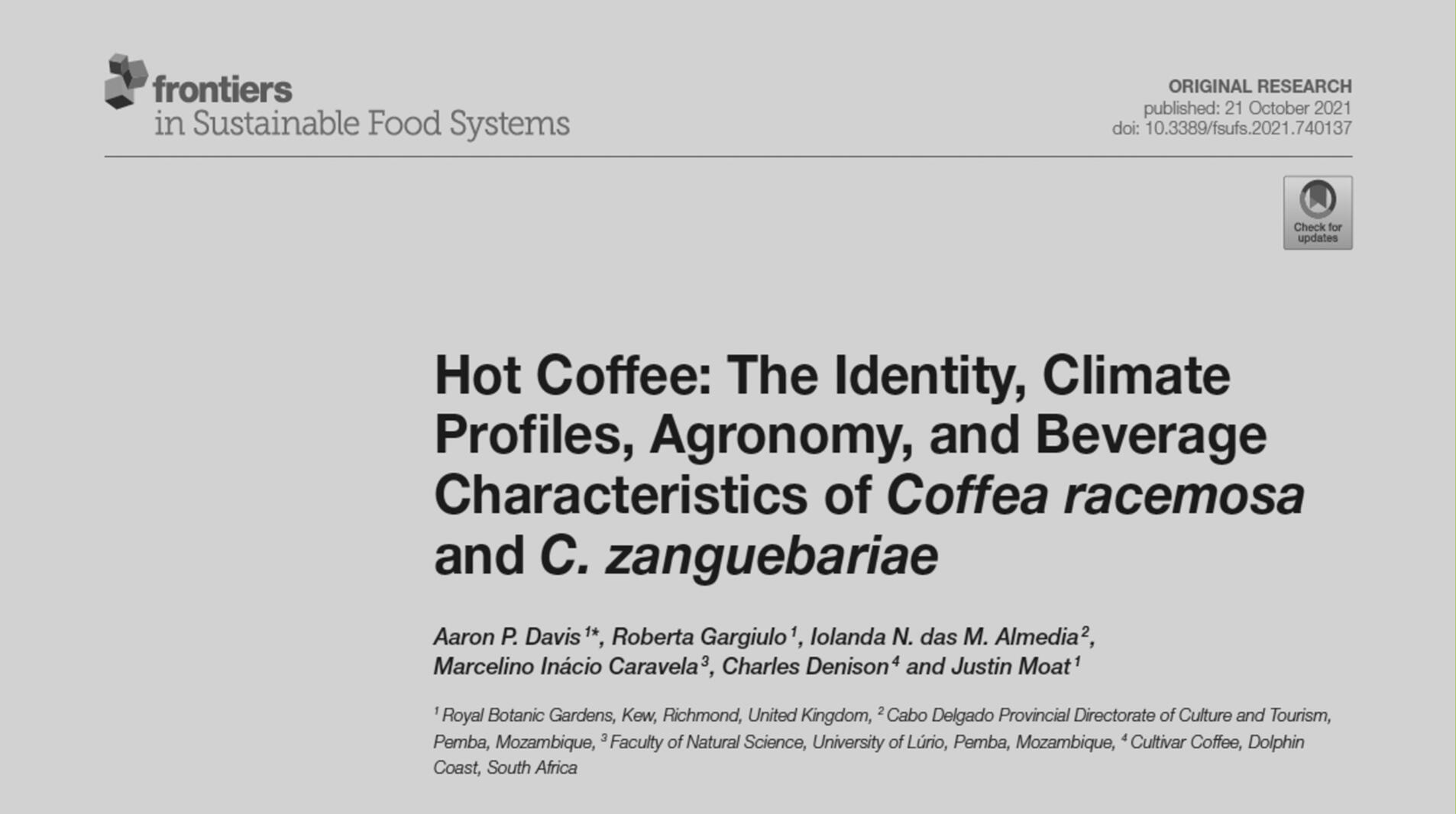
Science
C.racemosa has only recently been confirmed and identified as a separate species from C.zanguebariae - with the two often misrepresented or confused. See more here:
